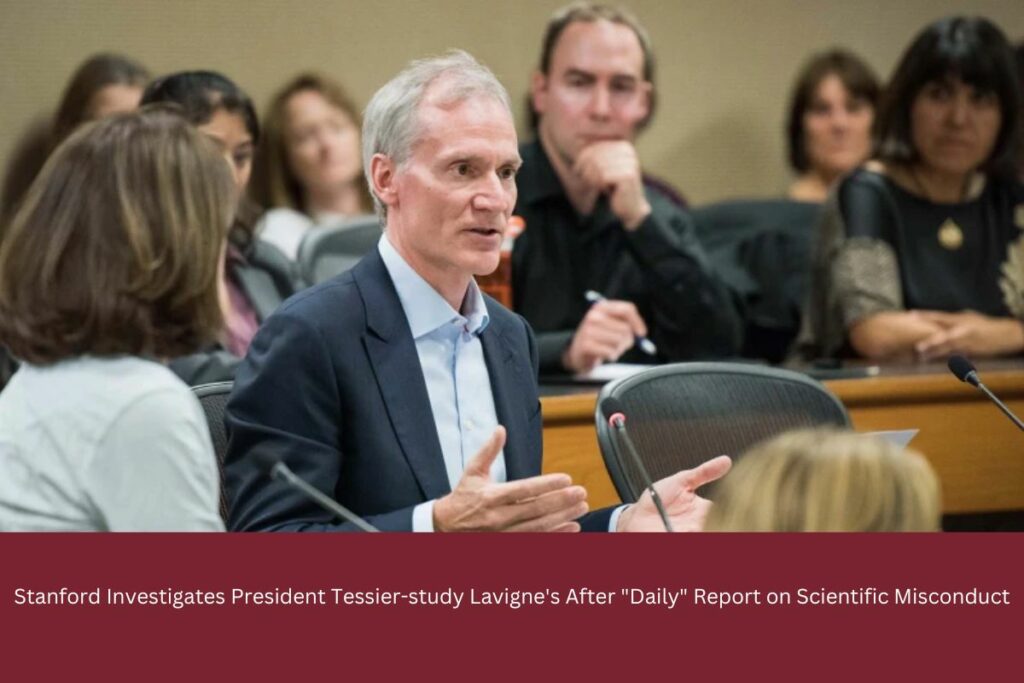Following the publication by The Daily on Tuesday morning of a piece detailing seven years of claims of scientific misconduct, Stanford has launched its own investigation into President Marc Tessier-research. Lavigne’s According to research misconduct specialist Elisabeth Bik, four papers with Tessier-Lavigne listed as an author in The Daily outline feature “severe concerns.” Two additional researchers backed up the problems.
The university will “examine the claims reported in the Stanford Daily, consistent with its standard rigorous method through which allegations of research misconduct are reviewed and handled,” according to spokesperson Dee Mostofi. The Board of Trustees will keep an eye on the probe.
The University’s probe may include a fifth study Tessier-Lavigne co-authored in 1999 in the journal Cell, in addition to the four studies The Daily previously reported on. This paper, which wasn’t brought up in The Daily’s inquiries, was cited in the statement released by the university last night.
The University claims that the study had mistakes that were pointed out to Tessier-Lavigne at the same time as the two Science articles that were extensively discussed in the first Daily story. Tessier-Lavigne submitted the inaccuracies to Cell, according to Mostofi, but the publication’s “editing team concluded that ‘we do not view it as necessary or acceptable to print a Correction and we consider the situation closed’.”
Last month, Bik told The Daily that worries about the newspaper were largely unimportant. On closer inspection, she claimed to have found locations in Figure 3A “where pieces of distinct blots appear to have been copied and rearranged.
You May Be Interested In:
- After Being Re-elected, What Will Newsom Do?
- Mastriano, a Trump Supporter, Has Conceded the Governorship of Pennsylvania
” Bik said the inaccuracy she discovered in her most recent analysis on Tuesday appeared to be “a really serious one,” in contrast to the problems that had been discovered in 2015 and reportedly communicated to Cell by Tessier-Lavigne.
Bik said, “These are not irrelevant, buffed-up areas, but areas representing experiments,” in response to the University’s claim that the image change was irrelevant to the overall data. That is a significant one. The Daily has contacted the University for a response regarding the most current analysis by Bik.
This image focuses on many frames that seem to have been cloned and rearrange in a figure that claims to depict pieces of various blots. Dr. Elisabeth Bik claims that pieces of several blots appear to have been duplicated and reorganized. Figure 3A, “Netrin-induced growth cone attraction is converted to repulsion by a ligand-gated interaction between cytoplasmic domains of UNC5 and DCC family receptors.”
(Cell, 1999, screenshot. Dr. Elisabeth Bik’s highlighted sections have more contrast. Questions on the scope of the investigation, how it would be carried out, who made the decision to investigate, when the board was told of any potential changes to Tessier’s documents, Lavigne’s, and how long the review will take were not addressed by the University or Tessier-Lavigne.
Through the spokeswoman, Tessier-Lavigne made her first public remarks regarding these articles and stated: “Scientific integrity is extremely important to the university and to me personally. I appreciate the Board of Trustees oversight of this process and will fully comply with it.
He did not answer when The Daily requested an interview with him to address or address the specific claims. Tessier-Lavigne will not be involved in the probe into his own research, according to Mostofi, despite the fact that he is the president of Stanford and a member of the Board of Trustees.
What the probe will reveal is unknown. There may be data issues in a few studies that warrant investigation and correction, but these worries do not seem to represent a systematic problem across Dr. Tessier-extensive Lavigne’s significant body of work, according to Matthew Schrag, a well-known researcher whose expose of a significant Alzheimer’s paper sent shockwaves through the scientific community earlier this year.
“If the original data is still available, sharing it would likely answer the majority of these issues,” he stated in an email. The Daily asked Tessier-Lavigne and the University if they would share original data, but neither party has answered. A proper evaluation cannot be completed without original data, according to several researchers The Daily spoke with.
In an effort to verify Tessier-story, Lavigne’s The Daily has contacted representatives from Cell, Science, and The EMBO Journal to see if they will take part in the University’s probe. According to a researcher who asked to remain anonymous because the charges were sensitive, if the University followed best practices, seeking the original figures would be the first step in any investigation, and the University might even try to hire independent investigators.

